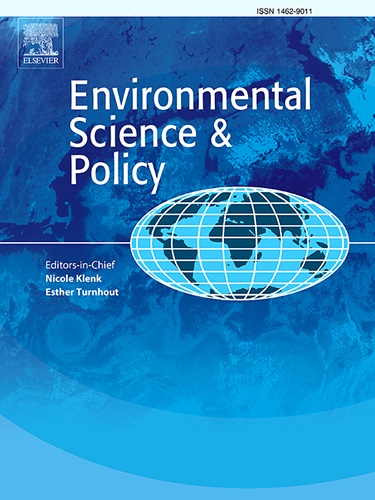有问题的装置:将大型语言模型应用于故意除碳
IF 4.9
2区 环境科学与生态学
Q1 ENVIRONMENTAL SCIENCES
引用次数: 0
摘要
本文介绍了一种以设备为中心的商议方法,该方法是在评估从空气中去除二氧化碳的方法的商议研讨会上开发的。我们的方法包括部署大型语言模型应用程序 ChatGPT(有时被称为 "生成式人工智能"),以诱发问题并生成有关碳清除的文本。我们提出了 "有问题 "设备的概念,以突出 ChatGPT 在讨论中引入的信息不规则性。我们的分析强调了审议机制成为集体批评焦点的场合,包括问题定义、专家资源、非专业身份和社会分类。然而,在这种情况下,ChatGPT 常常被不加质疑地当作一种为讨论提供信息的工具;其工具性的诱惑掩盖了它给研讨会带来的不和谐因素。最后,我们阐述了可疑工具的概念,并反思了碳清除作为一个需要知情讨论的领域的 "设计 "方式。本文章由计算机程序翻译,如有差异,请以英文原文为准。
Questionable devices: Applying a large language model to deliberate carbon removal
This paper presents a device-centred approach to deliberation, developed in deliberative workshops appraising methods for removing carbon dioxide from the air. Our approach involved deploying the Large Language Model application ChatGPT (sometimes termed “generative AI”) to elicit questions and generate texts about carbon removal. We develop the notion of the “questionable” device to foreground the informational unruliness ChatGPT introduced into the deliberations. The analysis highlights occasions where the deliberative apparatus became a focus of collective critique, including over: issue definitions, expert-curated resources, lay identities and social classifications. However, in this set-up ChatGPT was all too often engaged unquestioningly as an instrument for informing discussion; its instrumental lure disguising the unruliness it introduced into the workshops. In concluding, we elaborate the notion of questionable devices and reflect on the way carbon removal has been “devised” as a field in want of informed deliberation.
求助全文
通过发布文献求助,成功后即可免费获取论文全文。
去求助
来源期刊

Environmental Science & Policy
环境科学-环境科学
CiteScore
10.90
自引率
8.30%
发文量
332
审稿时长
68 days
期刊介绍:
Environmental Science & Policy promotes communication among government, business and industry, academia, and non-governmental organisations who are instrumental in the solution of environmental problems. It also seeks to advance interdisciplinary research of policy relevance on environmental issues such as climate change, biodiversity, environmental pollution and wastes, renewable and non-renewable natural resources, sustainability, and the interactions among these issues. The journal emphasises the linkages between these environmental issues and social and economic issues such as production, transport, consumption, growth, demographic changes, well-being, and health. However, the subject coverage will not be restricted to these issues and the introduction of new dimensions will be encouraged.
 求助内容:
求助内容: 应助结果提醒方式:
应助结果提醒方式:


